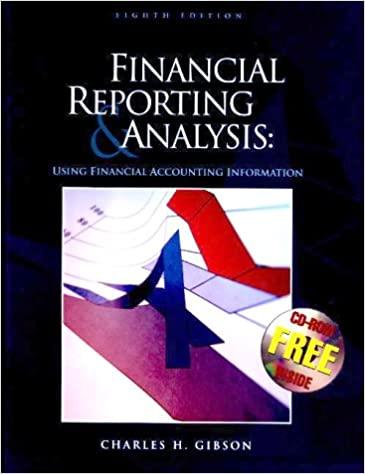Required Answer the following multiple-choice questions: a. The balance sheet equation can be defined as which of
Question:
Required Answer the following multiple-choice questions:
a. The balance sheet equation can be defined as which of the following?
1. Assets + Stockholders’ Equity = Liabilities 2. Assets + Liabilities = Stockholders’ Equity 3. Assets = Liabilities – Stockholders’ Equity 4. Assets – Liabilities = Stockholders’ Equity 5. None of the above
b. If assets are $40,000 and stockholders’ equity is $10,000, how much are liabilities?
1. $30,000 2. $50,000 3. $20,000 4. $60,000 5. $10,000
c. If assets are $100,000 and liabilities are $40,000, how much is stockholders’ equity?
1. $40,000 2. $50,000 3. $60,000 4. $30,000 5. $140,000
d. Which is a permanent account?
1. Revenue 2. Advertising Expense 3. Accounts Receivable 4. Dividends 5. Insurance Expense
e. Which is a temporary account?
1. Cash 4. Accounts Payable 2. Accounts Receivable 5. Notes Payable 3. Insurance Expense
f. In terms of debits and credits, which accounts have the same normal balances?
1. Dividends, retained earnings, liabilities 2. Capital stock, liabilities, expenses 3. Revenues, capital stock, expenses 4. Expenses, assets, dividends 5. Dividends, assets, liabilities P 2-6.
Required Answer the following multiple-choice questions:
a. Audit opinions cannot be classified as which of the following?
1. All-purpose 4. Qualified opinion 2. Disclaimer of opinion 5. Unqualified opinion 3. Adverse opinion
b. From the point of view of analysis, which classification of an audit opinion indicates that the financial statements carry the highest degree of reliability?
1. Unqualified opinion 4. Qualified opinion 2. All-purpose 5. Adverse opinion 3. Disclaimer of opinion
c. Which one of the following statements is false?
1. The reliance that can be placed on financial statements that have been reviewed is substantially less than for those that have been audited.
2. An accountant’s report described as a compilation presents only financial information as provided by management.
3. A disclaimer of opinion indicates that you should not look to the auditor’s report as an indication of the reliability of the statements.
4. A review has substantially less scope than an examination in accordance with generally accepted auditing standards.
5. The typical unqualified opinion has one paragraph.
d. If an accountant performs a compilation and becomes aware of deficiencies in the statements, the accountant’s report characterizes the deficiencies by all but one of the following:
1. Omission of substantially all disclosures 2. Omission of statement of cash flows 3. Accounting principles not generally accepted 4. All of the above 5. None of the above
e. In addition to the company’s principal financial statements, the Form 10-K and shareholder annual reports must include all but one of the following:
1. Information on the market for holders of common stock and related securities, including high and low sales price, frequency and amount of dividends, and number of shares.
2. Five-year summary of selected financial data.
3. Management’s discussion and analysis of financial condition and results of operations.
4. Two years of audited balance sheets, three years of audited statements of income, and two years of statements of cash flows.
5. Disclosure of the domestic and foreign components of pretax income.
f. Which of these is not a suggested problem caused by lack of harmonization of international accounting standards?
1. Positive effect on the international trade of accounting practice and services.
2. A need for employment of key personnel in multinational companies to bridge the “gap” in accounting requirements between countries.
3. Difficulties in reconciling local standards for access to other capital markets.
4. Difficulties in accessing capital markets for companies from less developed countries.
5. Negative effect on the international trade of accounting practice and services.
g. Which of these organizations has not played a role in the harmonization of international accounting standards?
1. United Nations (UN)
2. Internal Revenue Service (IRS)
3. International Accounting Standards Committee (IASC)
4. Financial Accounting Standards Board (FASB)
5. European Economic Community (EEC)
h. The Form 10-K is submitted to the 1. American Institute of Certified Public Accountants 2. Securities and Exchange Commission 3. Internal Revenue Service 4. American Accounting Association 5. Emerging Issues Task Force
Step by Step Answer:

Financial Reporting And Analysis Using Financial Accounting Information
ISBN: 9780324023534
8th Edition
Authors: Charles H Gibson





